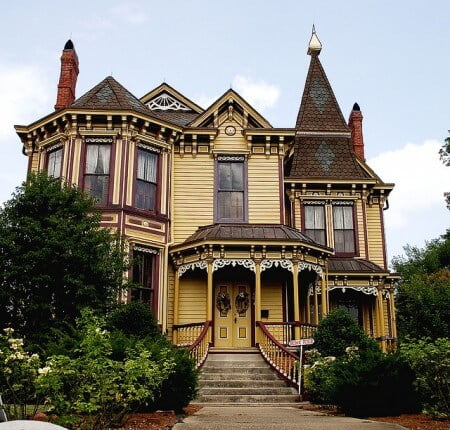They don’t build things like they used to is a popular truism. Nothing beats the nostalgia of owning an older home, but there are some potential problems to consider with buying one before making a major financial investment.
Foundation Fractures
Older homes are notorious for having foundation problems that are not immediately visible, especially homes that were built on “expansive” soil such as clay soil. Clay readily expands when wet and contracts as it dries, causing homes to rise and settle repeatedly throughout the years. Even older homes not built on clay soil will experience foundational issues ranging from bowed walls and uneven floors to serious cracks in the concrete slab foundation and doors not aligned with door frames.
Poor drainage due to architecturally inefficient designs, lack of eavespouting, degraded downspouts and plumbing leaks will allow water to seep into older homes and further exacerbate foundation cracks. Weakened foundations not only increase the risk of structural failure but can be also be extremely problematic in areas experiencing higher than average occurrences of earthquakes, tornadoes or hurricanes.
Basement Breakdowns
Basements in older homes are especially prone to damage because of their vulnerability to water and humidity damage. Basement walls that have suffered groundwater hydrostatic pressure for decades may be cracked and allowing water seepage, and mold. Cracking and sinking of older basement floors are also serious issues that require immediate attention to avoid damaging the entire foundation.
Cracks in Concrete Driveways and Sidewalks
Concrete naturally degrades over the years due to environmental stressors such as heat, water, chemicals and tree roots. If an older home’s driveway has an excessive amount of cracks, this might indicate a problem with leakage associated with the home’s plumbing system. When groundwater levels are raised by extra water leaking from faulty plumbing, the constant pressure forces concrete slabs to crack.
4 Other Problems Commonly Affecting Older Homes
- Electrical wiring that is more than 10 years old.
- Insufficient amounts of insulation in the attic and walls (an inch or two won’t be enough to keep energy bills as low as possible.
- Home constructed between 1910 to 1930 were typically built using studs about two stories tall. If an older home is this type of “balloon-framed” home, it will need repaired due to the ability of fire to spread rapidly throughout the two stories.
- Homes built before 1940 may still contain steel plumbing pipes that rust, clog and interfere with water pressure. They will definitely need replaced with modern plumbing fixtures to avoid major leaks or burst pipes
Also be on the lookout for ill-fitting, drafty windows, asbestos insulation, lead paint and deteriorated roof shingles that can add thousands of dollars to the price you already paid for your older home.
The Sani-Tred Solution
Permanently waterproof and repair cracked sidewalks, driveways, and basements. Sani-Tred permanently bonds with concrete at a molecular level, and provides 590% elongation. It’s the only product of it’s kind with a lifetime guarantee. The waterproofing solution trusted by over 100,000 customers. We offer mini sample packs with a Double Your Money Back Guarantee. Our Products our 99% effective at preventing harmful Radon Gas from entering foundations. Call 1-866-784-3308 or visit https://sanitred.com/basement-waterproofing/ to learn more.
